Surfing builds muscle through a full-body workout that combines paddling, balance, and wave riding. You'll engage your upper body muscles while paddling, strengthening your shoulders, arms, and back. Core muscles work overtime to maintain balance on the board, enhancing stability and posture. Your legs get a powerful workout as you squat, shift weight, and make quick movements to ride waves. The constant resistance of water provides a low-impact environment for muscle engagement, improving strength and endurance. As you surf regularly, you'll notice increased muscle definition and cardiovascular fitness. Dive deeper to discover how each aspect of surfing contributes to muscle growth and overall fitness.
Core Insight
- Paddling engages upper body muscles, including shoulders, triceps, biceps, and back, building strength and endurance.
- Core muscles are constantly activated for balance and stability on the board, strengthening abs, obliques, and lower back.
- Leg muscles are intensely worked through squatting, quick movements, and constant stabilization while riding waves.
- Surfing provides a full-body workout that improves muscle definition and tone through continuous engagement against water resistance.
- The sport challenges muscles with constant water resistance, offering a low-impact workout that enhances strength and muscle tone.
Paddling: The Ultimate Upper Body Workout
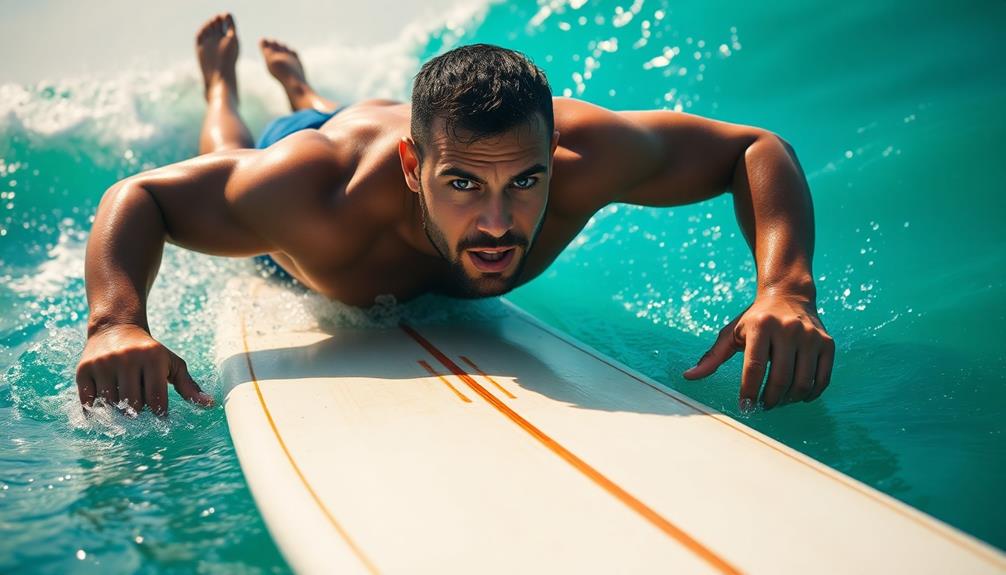
Paddling is a great way to work out your upper body when surfing. When you paddle out to catch waves, you use your shoulders, triceps, biceps, back muscles, and core all at the same time. This helps build strength and endurance in these areas.
To get the most out of paddling, make sure you use good form. Keep your core tight, your back straight, and your arms all the way out with each stroke. Mix up short, fast strokes for speed and long, deep strokes for power. The more you practice, the stronger your upper body will get, and the better you'll be at surfing.
After a tough paddling session, think about taking BCAA supplements. They can help your muscles recover faster and cut down on soreness.
Core Strength and Balance
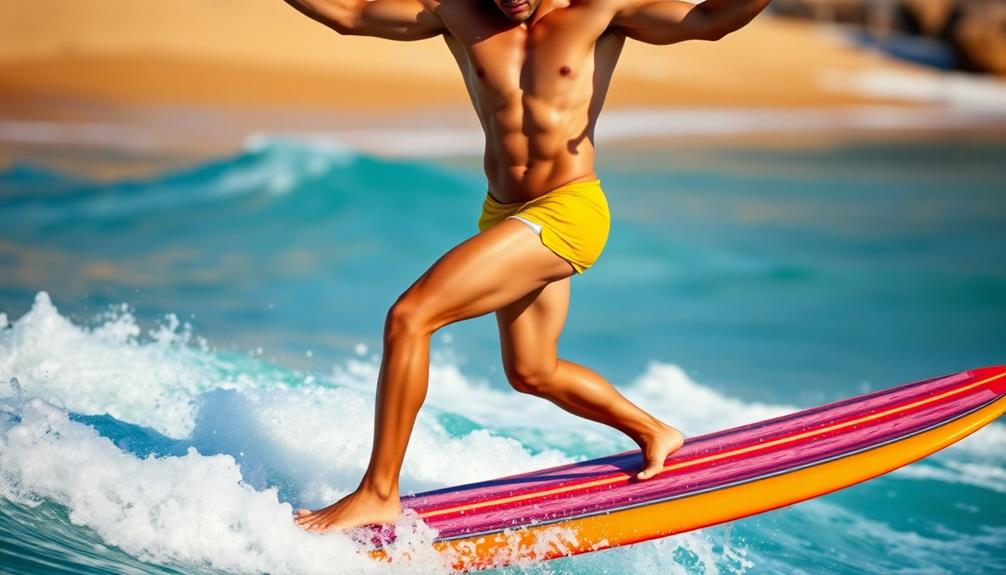
Surfing is great for building a strong core and improving balance. When you surf, you constantly use your core muscles to stay stable on the board. This works your abs, obliques, and lower back.
Balance is really important in surfing. You'll get better at it quickly as you learn to stay standing on your board. Better balance helps with posture and stability in daily life too.
Surfing helps your core and balance in these ways:
| Body Part | Benefits | Surfing Moves |
|---|---|---|
| Abs | Get stronger | Pop-ups |
| Sides | Get toned | Turns |
| Lower back | More stable | Paddling |
| Legs | Better balance | Stance |
| Butt | More power | Bottom turns |
Leg Power for Riding Waves
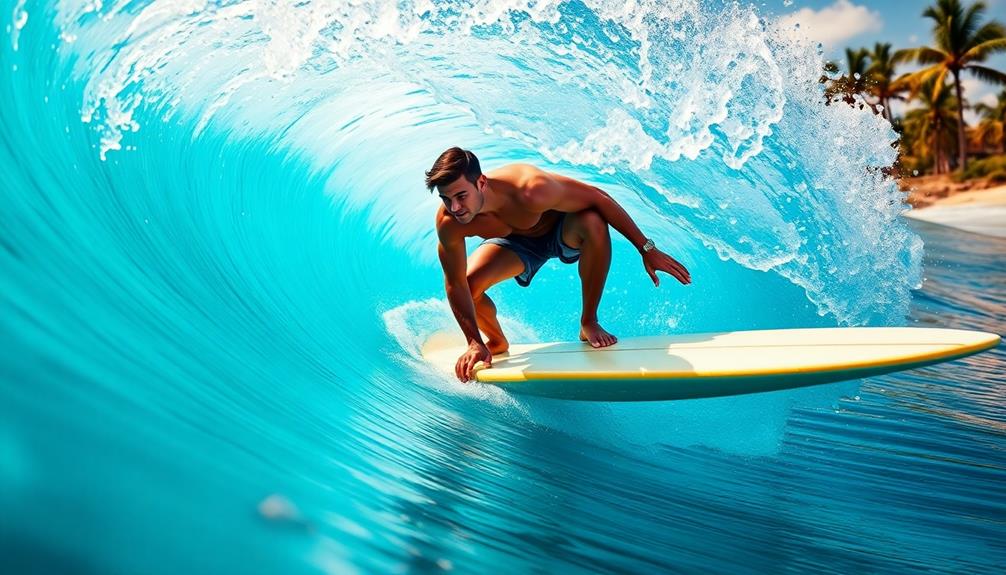
Surfing is an excellent way to build strong, powerful legs. As you paddle and ride waves, your leg muscles work hard to keep you stable on the board. Your quads, hamstrings, and calves get an intense workout with each session.
Surfing builds leg power through:
- Constantly squatting while riding waves
- Quick, explosive movements to change direction
- Engaging stabilizing muscles for balance
- Paddling out, which works your legs
Each surf session will challenge your leg muscles in new ways. You'll need to adjust your stance and shift your weight to stay on the board. Over time, your legs will get stronger and have more endurance. This will help you ride bigger waves and benefit other parts of your life, from daily activities to other sports.
Cardiovascular Endurance and Muscle Definition
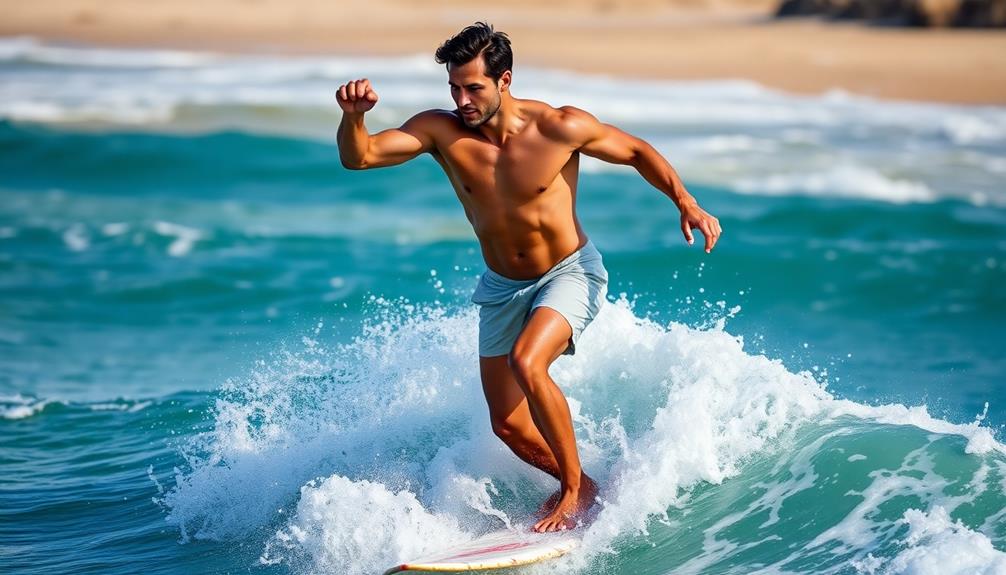
Surfing is more than just a leg workout. It gives you a full-body workout that makes your heart and lungs stronger and makes your muscles more defined. Paddling out to catch waves is an intense cardio exercise that improves your stamina and overall fitness. The repeated motions in surfing are like using compression sleeves for recovery, as both help with blood flow and muscle support.
When you ride waves, you're always adjusting your balance and position. This works your core muscles, including your abs and obliques. Paddling works your arms and shoulders, while keeping good posture on the board uses your back muscles. Doing these movements over and over helps tone these muscles and makes them more defined.
The water also provides resistance, which makes your muscles work harder and helps you gain strength all over your body.
Resistance Training in Water
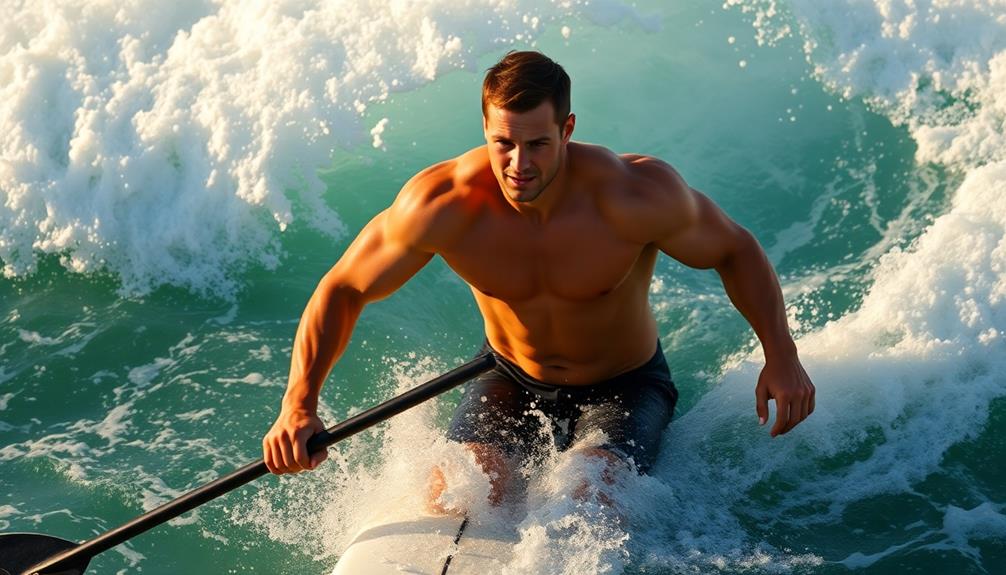
Surfing is a unique way to build strength and muscle. When you paddle and push through the water, you work against constant resistance. This challenges your muscles differently than exercises in a gym. Surfing is a low-impact workout that's easy on your joints. It works your stabilizer muscles as you balance on the board. You'll also improve your body awareness.
The ocean provides natural compression, like targeted sleeves. This helps you perform better and recover faster after surfing. You're not just lifting weights in the water. You're constantly adjusting to stay balanced as the waves move. Surfing works muscles in your whole body. This helps you build strength, endurance, and muscle tone. The water's resistance makes each movement more effective for building muscle.
Recovery and Muscle Adaptation
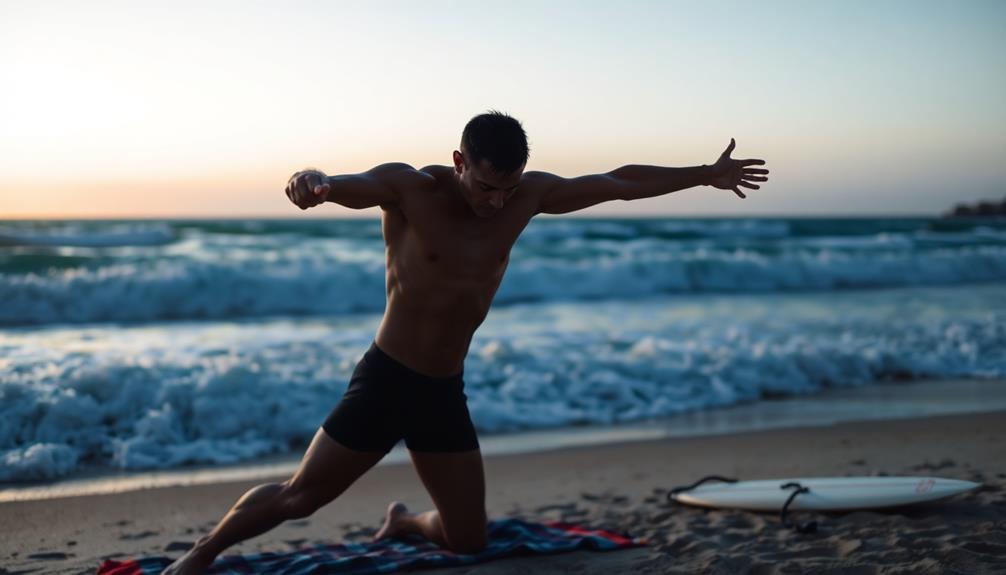
After you surf hard, your body needs rest to recover and get stronger. During this time, your muscles heal and grow, getting ready for your next session. You'll feel sore, but that's normal. It means your muscles are adapting. To help recovery, eat well, drink lots of water, and get plenty of sleep.
This is what happens during recovery:
| Phase | How Long | What's Going On |
|---|---|---|
| Acute | 0-2 hours | Inflammation starts |
| Early | 2-72 hours | Muscle soreness is worst |
| Late | 3-7 days | Muscles repair and grow |
| Supercompensation | 7-14 days | Strength goes up |
| Detraining | 14+ days | Strength goes down |
To build muscle, surf regularly. This lets your body adapt and get stronger over time. Remember, recovery is just as important as surfing for muscle growth.
Frequently Asked Questions
Can Surfing Help With Weight Loss?
Yes, surfing can help you lose weight. You'll burn calories paddling, balancing, and riding waves. It's a full-body workout that engages your core, arms, and legs. Plus, it's fun, so you'll likely stick with it.
Is Surfing Suitable for Beginners Looking to Build Muscle?
Yes, surfing can be suitable for beginners looking to build muscle. You'll engage your core, arms, and legs as you paddle and ride waves. It's a full-body workout that'll gradually increase strength and muscle tone over time.
How Often Should I Surf to See Muscle-Building Results?
To see muscle-building results, you should surf at least 2-3 times a week. Consistency is key. You'll need to challenge yourself regularly, pushing your limits and increasing your time in the water to maximize muscle growth.
Are There Specific Surf Techniques That Target Particular Muscle Groups?
Yes, there are specific surf techniques that target particular muscle groups. You'll work your arms and shoulders with paddling, engage your core while popping up, and strengthen your legs through turns and maintaining balance on the board.
Can Surfing Replace Traditional Gym Workouts for Muscle Building?
While surfing can't entirely replace gym workouts, it's an excellent full-body exercise. You'll build core strength, improve balance, and tone muscles. However, for targeted muscle growth, you'll still need to incorporate some traditional strength training exercises.

